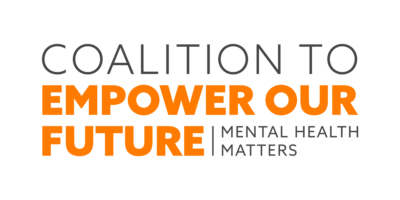Creating Comprehensive Solutions for Youth Mental Health: Miami Roundtable Recap
To kick off a national listening tour, the Coalition to Empower our Future (CEF) hosted a roundtable in Miami bringing together mental health experts, educators and community leaders. The roundtable featured a comprehensive conversation focused on identifying meaningful, long-lasting solutions to address the complex challenges today’s young people are facing.
Hosted by CEF Board Member and former Congressman Carlos Curbelo, and moderated by CEF Executive Director Glen Weiner, the panel brought together a diverse mix of voices and perspectives, from those working directly with young people and families to those shaping care systems and policy, including young people themselves.
Among the roundtable participants were:
- Carson Domey, executive director of the Coalition for Student Wellbeing
- Debra Albo-Steiger, CEO of the Children’s Bereavement Center
- Dr. Felicia Gallucci, assistant professor of psychiatry at the University of Miami Miller School of Medicine
- Gabriel Loud, a health research analyst at the Bipartisan Policy Center
- Dr. Howard Pratt, behavioral health medical director and a child and adolescent psychiatrist at Community Health of South Florida
- Janine Ribeiro Chow-Quan, vice president of community impact at United Way Broward
- Karina Pavone, president and CEO of Amigos for Kids
- Marni Stahlman, CEO of the Mental Health Association of Central Florida
- Nicole Owings-Fonner, director of the American Academy of Pediatrics’ National Center on Social Media and Youth Mental Health
- Rhea Lee, executive director of the Office of Mental Health Services at Miami-Dade County Public Schools
- Sean Prospect, executive director of After-School All-Stars of South Florida
- Tamara Sobel, Digital Wellness Project lead for Media Literacy Now
A central theme throughout the discussion was the importance of prevention and early intervention. Dr. Gallucci underscored the need to be “more proactive instead of reactive,” emphasizing how connection and community can serve as powerful protective factors. “After-school programs and being connected in a community are very actionable items,” she said, adding that proactive approaches can help prevent challenges from worsening.
Schools and youth organizations were recognized as effective drivers of change. Domey, a student at the University of Texas at Austin, added that young people themselves should be a part of the solution, explaining, “We want to get young people in the rooms with decision-makers, like the ones at this table who are truly representative of their communities.”
Prospect spoke about the role that after-school programs, such as After-School All-Stars, play in giving kids a sense of belonging. “It’s about giving kids a safe space to share what they feel and be heard,” he said. “Every student you encounter could be going through anxiety. Make them feel valued, sometimes that’s all it takes to make a difference.”
Lee reiterated this idea, noting that schools can be one of the first lines of defense for youth mental health, explaining that in Miami-Dade County Public Schools, “We try to teach our staff how to identify and recognize warning signs. The earlier we intervene, the better the outcomes.” Prevention is woven into everything the United Way of Broward County does, Ribeiro Chow-Quan shared, saying, “We go into schools to deliver evidence-based programs from grade three through high school, building each year so kids can have open conversations about mental health.” Pavone described the importance of trust and cultural awareness in breaking down barriers to care by “teach[ing] coping skills and social connections to make children more resilient, and work[ing] with families to build trust and bridge that cultural stigma.”
That sense of community and connection also extended beyond the classroom. Dr. Pratt reminded the group that no child exists in isolation, saying, “When we’re talking about children, we’re also talking about families. It’s really hard to help a child in crisis if we’re not supporting the family unit.” Similarly, Albo-Steiger highlighted the unique way grief impacts youth mental health, explaining that “one of the most powerful ways to support children and teens who have lost a loved one is peer grief support. Kids want to talk about their loss, and being with others who have experienced something similar helps them feel seen and understood. Small steps, like asking a child about a parent or sibling who has died, or providing grief-informed training for adults in schools and community programs, can make a huge difference in reducing isolation and building resilience.”
Panelists also turned to the growing gaps in access to care as a source of challenges. Stahlman specifically described Florida’s “mental health provider desert,” sharing how the Mental Health Association of Central Florida is working to help close gaps through trauma-informed training and free behavioral health services. On the policy level, Loud outlined the importance of bipartisan solutions to address the youth mental health challenge, adding that “mental health, especially youth mental health, is a really bipartisan topic.” He explained that lasting progress will come through collaboration across education, healthcare and government.
As the discussion turned to the digital landscape, panelists explored how technology intersects with youth wellbeing. Sobel made the case that “every child deserves media literacy education,” noting that digital self-awareness is now a key part of health literacy. “Today, literacy means being able to deal with your digital world, understanding how it affects you and learning how to self-regulate,” she added.
Owings-Fonner noted that digital wellness must be about balance, not fear, to help kids and parents navigate technology together instead of treating it as something to avoid. She emphasized the importance of “thinking about this in a way that’s solutions focused, that’s evidence based and that meets families where they are,” highlighting a tool called the 5 C’s of Media Use to help families balance media and promote healthy habits.
Curbelo and Weiner closed out the conversation, reminding participants about the importance of looking at the youth mental health challenge from a comprehensive lens, “I knew that this idea of a comprehensive, complete conversation about the subject was important. But today, I think we have all experienced and lived the value of having that complete and comprehensive conversation,” said Curbelo. “The solutions aren’t simple, but that’s why conversations like this matter,” Weiner added.
The discussion made clear that the youth mental health challenge doesn’t have one single solution, but it does have a positive path forward. Through initiatives such as early intervention, stronger school and community support systems, family engagement, responsible technology use and comprehensive policy making, leaders and communities can create the conditions that help young people stay healthy, resilient and hopeful for the future.
###

